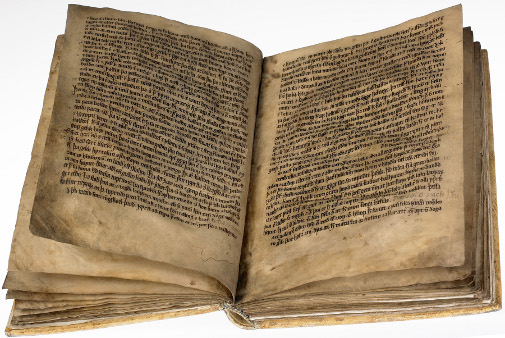Codex Wormianus - Nordic mythology
Codex Wormianus, Ole Worm’s book, was written c. 1350 and is noteworthy for its contents, its history and its state of preservation.
One of the few Icelandic authors from the Middle Ages who is known by name is Snorri Sturluson (1179–1241). The work which can be attributed to him with most certainty is the Edda, often referred to as ‘the prose Edda’ or ‘the younger Edda’, to distinguish it from the anonymous eddic poems, the ‘elder’ or ‘poetic’ Edda, previously attributed to Sæmundr the learned.
Instructional work in skaldic poetry
Snorri’s Edda was composed around 1230 as an instructional work in skaldic poetry, a manual which is made up of four books, all present in the Codex Wormianus: 1. A prologue, which anchors the work in a European-Christian context, 2. Gylfaginning (The deluding of Gylfi), a piece of mythology with the famed stories about Odin, Thor and Balder etc. (the name comes from the frame story within which they are told), 3. Skáldskaparmál, an introduction to poetic language, which explains skaldic poetry’s metaphorical periphrases (kennings): a ship, for example, can be called a ‘horse of the sea’, and 4. Háttatal, a metrical catalogue, which, in the form of a skaldic poem of over 100 verses in length, demonstrates the variations upon skaldic poetry’s chief verse-form (dróttkvætt).
Four grammatical treatises
The Edda is one of the most important of all medieval Icelandic writings, at once our main source for knowledge of the pagan Nordic world and a key to the understanding of Icelandic skaldic poetry. Along with this, the manuscript’s redactor adds the four so-called ‘grammatical treatises’, thus extending the work’s theoretical framework into the realms of style and rhetoric. The first grammatical treatise is here in a class of its own, being an original scientific description of Icelandic phonology from c. 1150. The treatise is only extant in the Codex Wormianus, which is 200 years younger than the supposed date of the treatise’s composition. The manuscript also contains the only surviving text of the eddic poem Rígsþula.
Ole Worm and 'the prose Edda'
Árni Magnússon got the manuscript in 1706 from Christen Worm, grandson of Ole Worm, from whom the manuscript takes its name. Ole Worm (1588– 1654) was professor in medicine at the University of Copenhagen but at the same time one of the founders of the scientific study of Nordic antiquities and runes. As professor he was the supervisor for many Icelandic students in Copenhagen and corresponded with them after they had returned to Iceland. He received the manuscript in 1628 from Arngrímur Jónsson, one of the key figures of the Icelandic Renaissance, as witnessed by the note on the first page: Olai Wormii – dono Arngrimi Jonæ Islandi.
Lacunae in Skáldskaparmál and Háttatal have been supplemented by Worm with paper transcriptions taken from, among others, a manuscript which he borrowed from his friend, the historian Stephan Stephanius, professor at the Academy in Sorø. Unlike most Icelandic parchment manuscripts, the leaves in the Codex Wormianus are strikingly pale. The explanation is that Worm had his Icelandic assistant wash them in old urine, or so Worm says in a letter to Stephanius, who had asked him how he could make his dark brown manuscript of Grettis saga more legible.
Snorri’s Edda exists in two other medieval manuscripts, Codex Regius (GKS 2367 4to), acquired by King Frederik III in 1662 and now in Iceland, and the manuscript DG 11 4to, which Stephanius got in 1639 and is now in the Uppsala University Library. Another notable source is Codex Trajectinus (Ms. 1374, a pa- per copy of a medieval manuscript), which Ole Worm got in 1626 but which, in 1643, ended up in the University Library in Utrecht.

